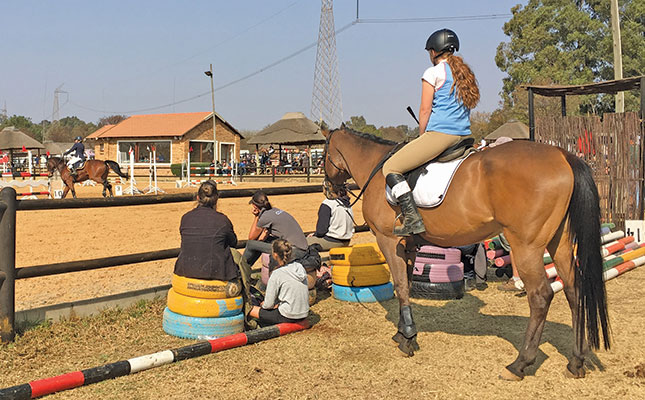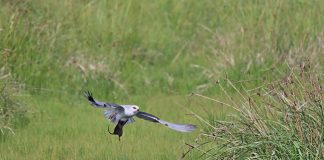
Photo: Dr Mac
As a rider, your legs are important for good balance. While your thighs are in contact with the saddle, they are often neglected during riding lessons, where the focus seems to be mainly on the calves, ankles and heels of the rider.
In Western riding, riders are advised to ‘sit on the pockets of their jeans’. This automatically helps the rider to round his/her spine and pull up his/her core muscles in the abdomen.
If you then kick your feet out of the stirrups and hang your legs, your thighs will be in the correct position in the saddle. If riding Western or dressage, straighten your feet so that your toes point forwards. Relax your knees.
This will give you the ideal height for your stirrups. If you are a show jumper, you will have to bend your knees a bit more and your stirrups will be shorter; however, you still need to round your back and pull up your core muscles.
Testing balance
Testing your balance is best done on the lunge. For this you will need help from your instructor. The ultimate aim is to balance yourself only with your legs and ride with your arms folded at the walk, trot and canter.
In the beginning, you will feel terribly insecure, even at the walk, if you take both hands off the reins. So the first step is to hold onto the pommel of the saddle and let your trainer lunge you while you are riding a tame pony at a walk.
When you feel comfortable with this and have managed to round your back to ‘sit on your pockets’ without slouching forwards (your shoulders must still be in line with your hips and heels), you have completed the first step in becoming balanced in the saddle.
The next step, at a walk, is to hold the saddle with one hand, and put the other hand on your hip. Once you are comfortable with this, you can ask the instructor to let you trot. It is not a sign of weakness if you grab the pommel again with two hands to balance yourself.
Be brave and keep at it until you are able to ride with both hands on your hips at a rising trot for at least a full circle on the lunge. These lunge lessons should not last more than 15 minutes each. After the lunge lesson, go on a relaxed outride to loosen up your muscles.
An unbalanced rider can take a week or more of daily lessons to become balanced, with both hands on their hips, at the walk and trot.
Invest in some liniment like Deep Heat or Iceman, as you are going to be very stiff after the first few lessons!
Once you are confident enough to be lunged at the walk and trot, transitioning up and down every few circles for 15 minutes without grabbing onto the saddle, advance to doing this exercise at the canter.
Eventually, you should be able to ride a schooled horse with your arms folded, guiding the horse’s movement using just your thighs and seat bones. Don’t be impatient! You may need a few years of experience in the saddle to achieve this level of balance.
Dr Mac is an academic, a practising equine veterinarian and a stud owner.










